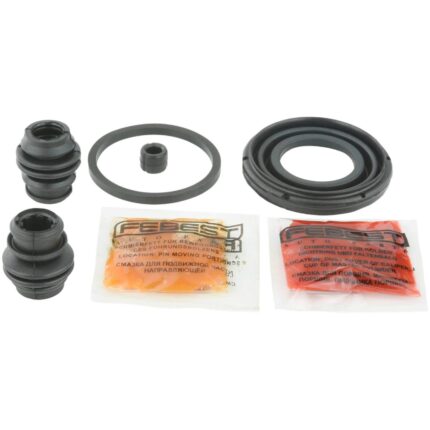-5%
Get Honda Fit GE Bush Rear Axle Carrier RH/LH;
The rear axle carrier, also known as the rear axle housing or rear axle assembly, is a vital component in a vehicle’s drivetrain system. It houses the rear axle shafts, differential, and bearings, connecting the wheels to the drivetrain while supporting the vehicle’s weight. Here’s an in-depth exploration of the rear axle carrier, covering its functions, components, types, importance, signs of issues, maintenance, and replacement considerations.
Functions and Components of Rear Axle Carrier
- Support and Housing: The rear axle carrier serves as a robust housing that supports the rear axle shafts and differential assembly. It withstands the forces exerted by the vehicle’s weight and torque from the drivetrain.
- Differential Mounting: It provides a secure mounting point for the differential assembly, which is responsible for distributing torque to the rear wheels while allowing them to rotate at different speeds during turns.
- Wheel Attachment: The rear axle carrier includes provisions for mounting the rear wheels, typically through wheel hubs or bearing assemblies that support the axle shafts.
- Bearings and Seals: Bearings and seals within the rear axle carrier support and facilitate the rotation of the axle shafts, while also sealing lubricants (like gear oil) within the differential housing to prevent leaks and maintain proper lubrication.
- Suspension Attachment Points: It often integrates attachment points for suspension components, such as control arms or trailing arms, which connect to the chassis and help maintain wheel alignment and ride quality.
Types of Rear Axle Carriers
- Solid Rear Axle: Common in trucks and some SUVs, a solid rear axle carrier consists of a single piece housing that houses both axle shafts and the differential. It provides robust support and durability, suitable for heavy-duty applications.
- Independent Rear Suspension (IRS): Found in many passenger cars and performance vehicles, IRS setups feature individual rear axle carriers for each wheel. This allows for independent wheel movement, providing better ride comfort and handling characteristics.
Importance of Rear Axle Carrier
The rear axle carrier is crucial for several reasons:
- Drive and Power Transmission: It transmits torque from the differential to the axle shafts, powering the rear wheels and enabling vehicle movement.
- Vehicle Stability: The rear axle carrier contributes to the vehicle’s stability and handling by maintaining proper alignment of the rear wheels and supporting the differential’s operation.
- Load Bearing: It supports the weight of the vehicle, along with any additional loads, ensuring structural integrity and preventing deformation or failure under stress.
Signs of Issues with Rear Axle Carrier
- Noise from Differential: Grinding, whining, or clunking noises coming from the rear axle carrier area may indicate issues with the differential or bearings, such as worn or damaged components.
- Leaking Fluids: Visible leaks of gear oil or differential fluid from the rear axle carrier housing indicate a seal or gasket failure, which can lead to inadequate lubrication and potential damage to internal components.
- Vibration or Shaking: Excessive vibration or shaking felt through the vehicle’s chassis, especially during acceleration or deceleration, can indicate worn axle bearings or improper alignment within the rear axle carrier.
- Uneven Tire Wear: Misalignment or issues within the rear axle carrier can cause uneven tire wear patterns, typically seen as excessive wear on one side of the tire tread.
- Handling and Stability Issues: Difficulty steering, poor handling, or instability during turns may indicate problems with the rear axle carrier, such as a damaged housing or worn suspension attachment points.
Maintenance and Replacement Considerations
- Regular Inspection: Include the rear axle carrier in routine vehicle inspections, checking for leaks, unusual noises, or signs of wear. Inspect the axle shafts, bearings, seals, and differential components as part of maintenance checks.
- Fluid Inspection and Replacement: Monitor the condition and level of gear oil or differential fluid regularly. Replace fluids according to the manufacturer’s recommended intervals to ensure proper lubrication and prevent internal component wear.
- Professional Service: For complex repairs or component replacements, such as axle shafts, bearings, or differential overhaul, consult a qualified mechanic or automotive technician with experience in drivetrain systems.
- Alignment and Suspension Checks: After any maintenance or repairs involving the rear axle carrier, perform a wheel alignment and suspension check to ensure proper geometry and alignment of the rear wheels.
- Replacement Parts: Use high-quality OEM or aftermarket replacement parts designed for your vehicle’s specific make and model when replacing components within the rear axle carrier assembly.
Follow us on Facebook for more parts.



